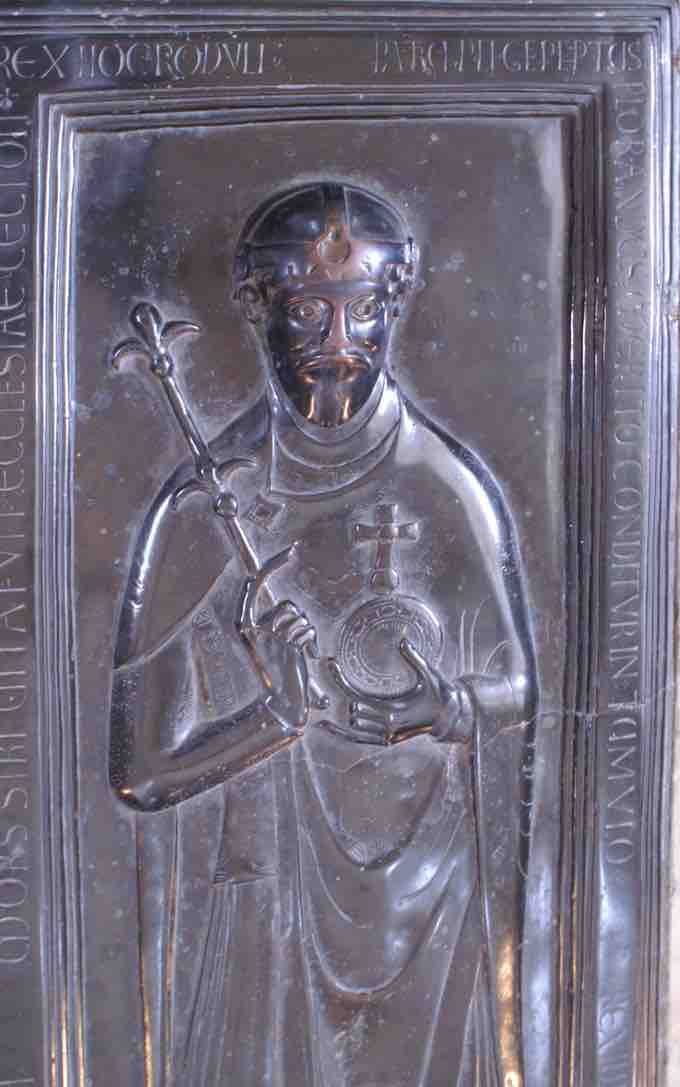Background
Rudolf of Rheinfelden (c. 1025 – 15 October, 1080) was Duke of Swabia (1057–1079) and German Antiking (1077–1080). He was the son of Count Kuno of Rheinfelden and eventually became the alternative king, or Antiking, for the politically oriented anti-Henry German aristocrats. This rebellion became known as the Great Saxon Revolt. He died as a result of battle wounds as his faction met and defeated Henry's in the Battle of Elster.
Tomb of Rudolf of Swabia
Rudolf of Rheinfelden's tomb, located at the cathedral of Merseburg, is a fine example of Romanesque sculpture. Sculpture of this era is marked by a love of inventive surface patterns and an expressive approach to the human body, using elongation, unnatural poses, and emphatic gestures to convey states of mind. Rudolf's tomb reflects these characteristics: the sculpture of his body is elongated and lies with a scepter in one hand and an orb in the other, symbolic of the royal title he claimed but never held in life. He is depicted in royal garments and a crown.
The material used to construct the tomb also reflects the high status of metalwork in Romanesque sculpture. Indeed, precious objects constructed from metalwork, enamelwork, and ivory carried a much higher significance than paintings during this time. Metalwork, including decoration in enamel, became especially sophisticated during the 10th and 11th centuries. Rudolf of Rheinfelden's tomb reflects this aesthetic with its bronze relief of Rudolf's body encased inside of a raised border edge. An inscription is also etched into the border, demonstrating the metalworking skill that went into the construction of the tomb.

Tomb of Rudolf of Swabia
The tomb of Rudolf of Swabia is exemplary of Romanesque sculpture.